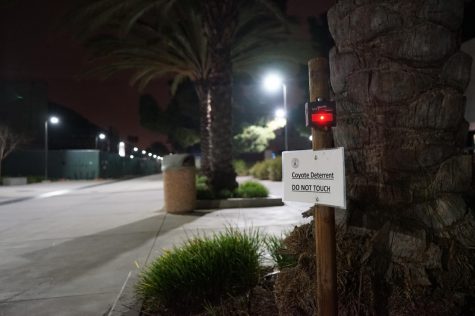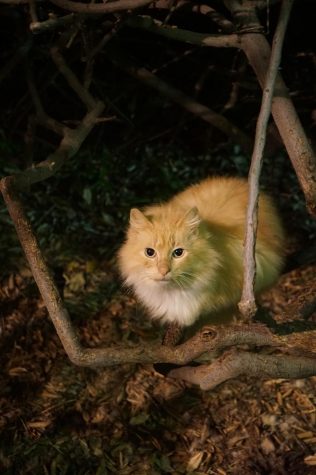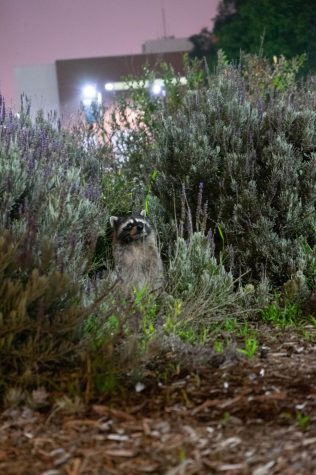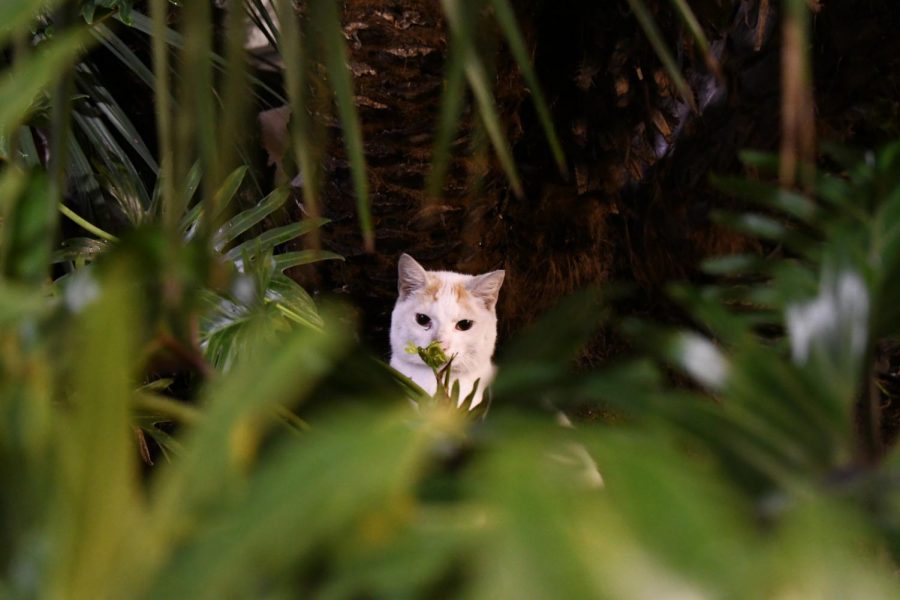Wildlife continues to seek food, shelter at EC
As the sun goes down and night classes begin to wrap up, the El Camino College campus becomes a playground for cats, raccoons and squirrels as they wander throughout the campus scouring for food.
However, on several corners, a pulsating red light glows in the darkness—below it reads: Coyote Deterrent. Do Not Touch.

March 1, 2019. Photo credit: Jun Ueda
“It is important for students to immediately report any sightings of coyotes on campus,” EC Chief of Police Michael Trevis said. “Avoid them, don’t feed them, if you see one on campus, please call us, use the blue poles, or call us.”
In the last year, EC’s police department has received seven reports of coyote sightings on campus from janitors, faculty at night and even students during the day.
Because of this, coyote deterrents were set up around campus in the Fall of 2018.
EC biology professor Bryan Carey said the reason why coyote awareness has risen in the past decade could be because of our lack of exposure to wildlife in urban areas.
“It could be the change in perspectives in the decades of generations over time,” Carey said. “We are more sheltered and not exposed to seeing coyotes around, whereas my father could’ve been regularly seeing coyotes or other wildlife more often.”
Carey said urban coyotes have been around long before we began to raise awareness about them.
Carey added that as humans begin to colonize more land, the habitats for wildlife shrunk, forcing them to adapt to urban environments.
“You kind of have to think beyond our bias for some of that and those answers come from changes in ice ages, migration patterns, humans coming or going, and humans introducing other species that might compete with or be similar to [coyotes],” Carey said. “I don’t want people getting attacked certainly not, but I don’t want them [coyotes] being punished for trying to be what they are.”
Growing concerns
Journalism and English professor, Kate McLaughlin, who has also been involved with the EC Cat Care Volunteer Group, said she was concerned regarding the risks of other cats and people being attacked by coyotes.
“It’s a concern that urban areas across the nation are having to deal with as the coyote’s habitat is being developed and is getting pressed into urban areas,” McLaughlin said.

The EC Cat Care group support the stray cats that are abandoned on campus by feeding them and giving them medical attention.
Despite their work, there is only so much the group can do to protect the cats as Don Cornelius was found ripped open alongside the northern area of the Humanities Building on Saturday, Dec. 16.
While no coyote reports were made that day, according to EC police, the attack was believed to have happened sometime between midnight and dawn.
Carey said that coyotes will usually only take drastic measures, like confronting humans, under special circumstances.
“They’re generally doing what a predator would do—they are trying to survive, trying to get food, and reproduce,” Carey said. “Unless they are absolutely so desperate for food or they’re injured and they’re out of their normal instincts and conscious choices, they don’t want to be chased after by humans.”
Carey added that humans should enjoy living with wildlife as there is not much left after urbanization.

March 1, 2019. Photo credit: Jun Ueda
“We do have to occasionally have that bit of humility towards nature or modify our behavior where possible,” Carey said. “What we’ve made kind of our urban lifestyle and our urban structures is a challenge to them.”
Regardless, Trevis said that containing wild animals like coyotes can be difficult, dangerous and best left to the LA County Animal Control.
“Though we are actively trying to contain them, we strongly encourage people not to feed the coyotes, pet them, and not to approach them,” Trevis said. “However, if you are encountered by one, yelling, and showing aggression will scare them away.”







